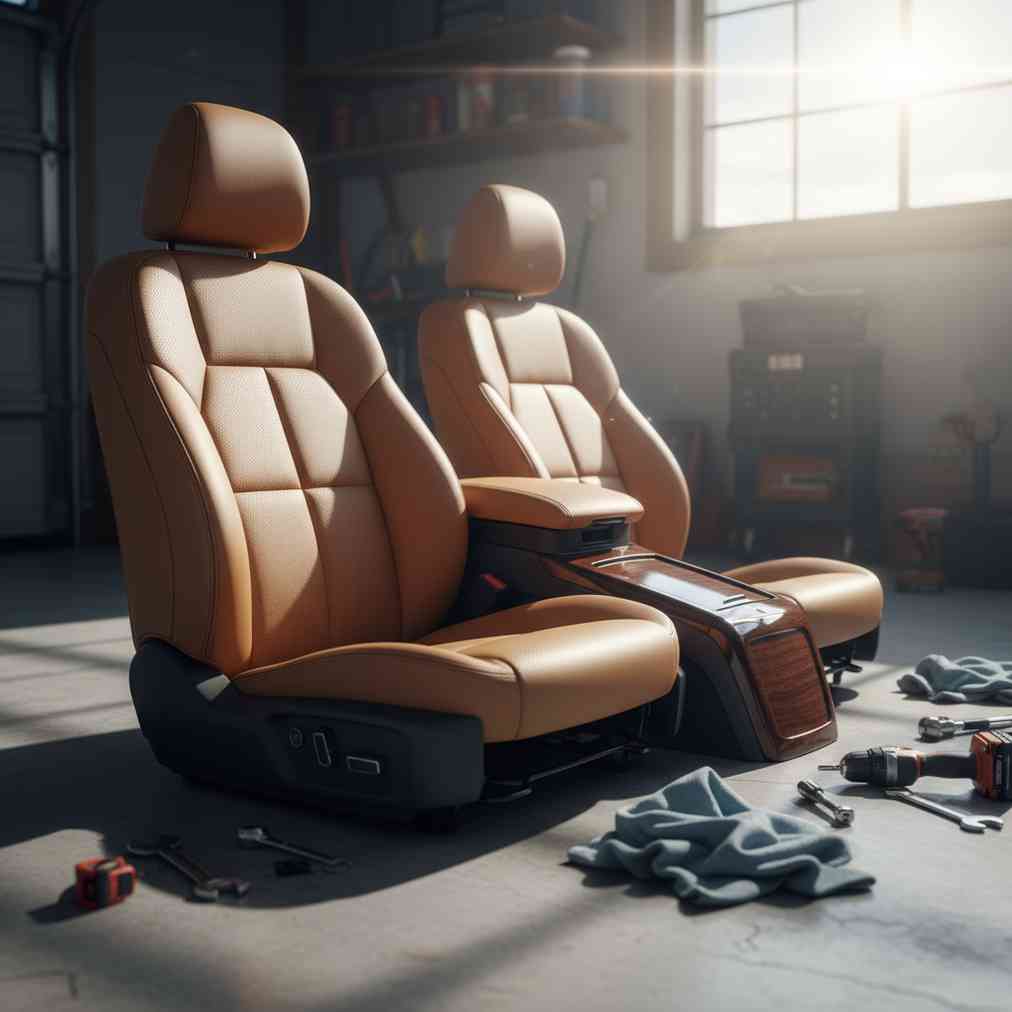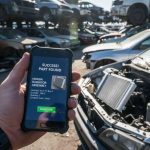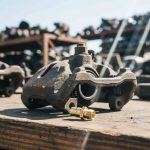Transform Your Base Model with Junkyard Luxury Features: The Smart Way to Upgrade
Driving a base model vehicle doesn’t mean you have to settle for basic features forever. The automotive enthusiast community has discovered a cost-effective secret: upgrading base models with luxury features sourced from junkyard high-trim donor cars. This approach, known as “OEM+” upgrades, allows you to transform your vehicle’s interior and amenities without breaking the bank.
The concept is simple yet brilliant: source Original Equipment Manufacturer (OEM) parts from higher trim levels of the same or closely related models from salvage yards near you. This maintains the factory look and feel while providing significant cost savings compared to dealership upgrades or aftermarket alternatives.
Understanding the OEM+ Philosophy
The goal of an OEM+ upgrade is to install parts from a higher trim level while maintaining the vehicle’s original aesthetic and functionality. This approach is preferred by many enthusiasts because it preserves the factory integration and quality that aftermarket parts often fail to match.
“Junkyard swaps are a gold mine for upgrading your car without the luxury price tag, but patience and research are key to success.”
Whether you’re looking at OEM car parts for quality upgrades or considering more complex modifications like those found in performance builds, the principles remain the same: research, compatibility, and careful installation.
Most Popular Junkyard Luxury Upgrades
Leather Seat Swaps
Leather seats are among the most transformative upgrades you can make to your vehicle’s interior. Swapping cloth seats for leather ones from higher trim levels dramatically improves both comfort and resale value. The process involves more than just seat replacement – you’ll often need to source wiring harnesses, heating elements, and control modules.
- Direct swaps work best when seat bolt patterns match between trims
- Power seats introduce electrical complexity requiring additional wiring
- Memory seats may need programming or module transfers
- Side airbag compatibility must be verified for safety
Premium Sound System Upgrades
Factory premium audio systems often outperform aftermarket alternatives in terms of integration and sound quality. Upgrading to OEM premium sound systems involves sourcing head units, amplifiers, speakers, and associated wiring from luxury variants.
As demonstrated in professional installation guides, proper wiring is crucial for these upgrades. The complexity can vary significantly depending on whether the donor car’s wiring harness remains intact.
Interior Trim Upgrades
Wood grain, brushed aluminum, or carbon fiber trim pieces can replace basic plastic elements to elevate cabin aesthetics. These upgrades are typically the easiest to perform, requiring mainly careful removal of clips and fasteners.
Sourcing Compatible Donor Cars
Success depends heavily on finding the right donor vehicle. Compatibility verification is crucial before purchasing any parts. Here’s how to ensure you’re getting the right pieces:
- VIN decoding: Use the vehicle’s VIN and build codes to identify exact specifications
- Part number cross-reference: Online databases help verify part compatibility between trims
- Community forums: Model-specific communities provide valuable compatibility information
- Salvage yard inventory: Many yards allow searching by VIN, make, and model year
When searching for donor vehicles, remember that high-value used auto parts from luxury trims are increasingly sought after, so act quickly when you find suitable donors.
Essential Parts to Salvage from Donor Cars
The key to successful upgrades lies in collecting all necessary parts during your junkyard visit. Many upgrades fail because essential supporting parts are overlooked.
| Feature Type | Primary Parts | Essential Supporting Parts | Difficulty Level |
|---|---|---|---|
| Leather Seats | Seat assemblies, mounting brackets | Wiring harnesses, control modules, airbag connectors | Moderate |
| Premium Audio | Head unit, amplifiers, speakers | Complete wiring harness, antenna cables, trim bezels | Moderate to Hard |
| Wood Grain Trim | Trim panels, console pieces | Mounting clips, fasteners, adhesive strips | Easy |
| HVAC Controls | Control panel, actuators | Control wiring harness, climate sensors | Moderate |
| Ambient Lighting | LED modules, light strips | Control module, dimmer switches, wiring | Moderate |
Critical Checklist for Every Junkyard Visit
- The main feature part: Seat assembly, head unit, or trim panel
- Mounting hardware: All bolts, nuts, screws, and specialized clips
- Wiring harnesses: Complete harnesses that plug directly into parts
- Control modules: Electronic modules for heated seats, amplifier control, etc.
- Trim bezels: Surrounding pieces that ensure factory appearance
- Sensors: Any associated sensors for proper functionality
Professional tutorials like this detailed upgrade guide demonstrate the importance of collecting complete part sets during your salvage yard visit.
Installation Difficulty and Electrical Considerations
Electrical compatibility represents the biggest challenge in luxury feature upgrades. Base model vehicles often lack the necessary wiring infrastructure for premium features, requiring additional parts and careful installation.
Safety-Critical Considerations
Some upgrades involve safety systems that require professional attention:
- Airbag systems: Seat airbags require proper module integration
- Electrical grounding: Maintaining proper grounding prevents shorts and faults
- Sensor compatibility: Occupancy sensors and crash sensors must match
- Factory programming: Some features require dealer programming after installation
“Never compromise safety features like airbags or seat belt sensors when upgrading seats. Proper module integration is non-negotiable.”
Cost Analysis and Value Considerations
The financial benefits of junkyard luxury upgrades can be substantial. Used OEM parts typically cost 30-50% less than aftermarket alternatives, with potential savings of $500-$1,500 depending on the upgrade complexity and vehicle type.
Consider these cost factors when planning your upgrade:
- Part costs: Salvage yard prices vary by location and demand
- Installation time: Factor in your time or professional labor costs
- Additional parts: Supporting parts often cost more than expected
- Tools and materials: Specialized tools may be required
- Potential complications: Budget for unexpected issues
Many enthusiasts find that professional installation guides help them avoid costly mistakes during the upgrade process.
Modern Trends in OEM+ Upgrades
The OEM+ modification scene continues evolving with technology. Recent trends include:
- Real-time inventory searches: Apps and websites now allow searching junkyard inventory by VIN and part numbers
- Plug-and-play adapters: Improved adapter harnesses make electrical connections easier and more reliable
- Pre-tested part kits: Some salvage yards offer tested luxury upgrade kits for popular vehicles
- CarPlay/Android Auto integration: Modern infotainment features paired with OEM interior upgrades
These developments make luxury upgrades more accessible to DIY enthusiasts while reducing the risk of compatibility issues.
Step-by-Step Upgrade Process
1. Research and Planning Phase
- Identify your vehicle’s exact specifications and trim level
- Research compatible donor vehicles and their trim designations
- Create a comprehensive parts list with OEM part numbers
- Budget for parts, tools, and potential professional installation
2. Sourcing Phase
- Contact multiple salvage yards to check inventory
- Verify part numbers match your compatibility research
- Inspect parts thoroughly before purchase
- Document existing wiring and connections with photos
When you’re ready to move on from your current vehicle, consider getting an instant quote for your junk car to help fund your next upgrade project.
3. Installation Phase
- Test all electrical parts on a workbench before installation
- Follow proper safety procedures when working with airbag systems
- Take detailed photos during disassembly for reference
- Use proper tools to avoid damaging clips and connectors
Resources like detailed installation tutorials can provide valuable guidance throughout the process.
Common Mistakes to Avoid
Learning from others’ experiences can save time and money. Common upgrade mistakes include:
- Incomplete part collection: Leaving essential wiring or modules behind
- Compatibility assumptions: Assuming parts fit without proper verification
- Electrical shortcuts: Improper wiring connections leading to failures
- Safety system modifications: Altering airbag or safety systems without expertise
- Documentation neglect: Failing to document original wiring configurations
Maximizing Resale Value
Well-executed OEM+ upgrades can increase your vehicle’s resale value by 5-10% for models where luxury features are highly valued. However, excessive modifications can sometimes reduce appeal to general buyers.
To maximize value retention:
- Keep original parts in case buyers prefer stock configuration
- Document all upgrades with photos and receipts
- Ensure all safety systems function properly after modifications
- Focus on universally desirable features like leather seats and premium audio
Advanced Upgrade Considerations
For enthusiasts ready to tackle more complex projects, advanced upgrades might include:
- Climate control systems: Automatic temperature control from higher trims
- Advanced lighting: Adaptive headlights or LED interior lighting
- Infotainment integration: Navigation systems and premium connectivity
- Performance-oriented luxury: Sport seats and steering wheels from performance trims
These upgrades often require programming and may benefit from professional installation to ensure proper integration.
Conclusion: Building Your Dream Interior on a Budget
Upgrading your base model vehicle with junkyard luxury features represents an excellent opportunity to enhance your driving experience without luxury car prices. Success requires patience, research, and attention to detail, but the results can be truly transformative.
Whether you’re installing leather seats, upgrading your sound system, or adding premium trim pieces, the key lies in thorough preparation and respect for safety systems. With the right approach, you can achieve luxury car comfort and style while maintaining the reliability and integration that only OEM parts provide.
The growing community of OEM+ enthusiasts continues to share knowledge and resources, making these upgrades more accessible than ever. Take advantage of modern tools like inventory search apps and compatibility databases to streamline your upgrade journey.
Remember: the best luxury upgrade is one that enhances your daily driving experience while maintaining safety and reliability. Start with simpler modifications like trim upgrades, then progress to more complex electrical systems as your skills and confidence grow.





Leave a Reply
You must be logged in to post a comment.